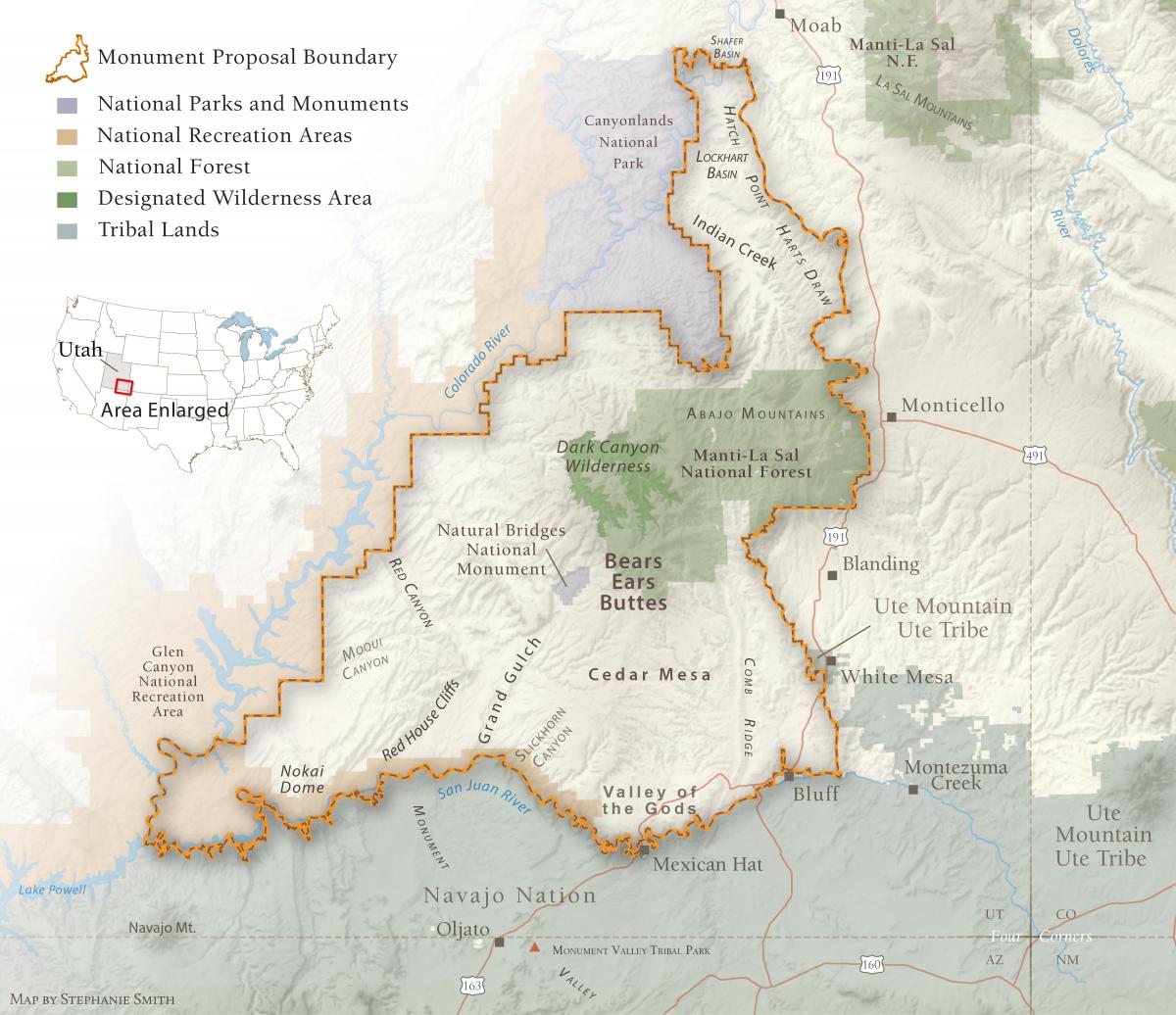
BY JIM ENOTE
The Bears Ears National Monument proposal asserts that tribes and the federal government will collaboratively co-manage the monument as partners. Upper-level policy and decision-making for the monument would be conducted through a monument commission comprised of both tribal and federal representatives. The Bears Ears monument concept will address the asymmetry between federal land managers and tribal authorities and give local indigenous traditional knowledge and science equal treatment and application.
While the current system of science-based natural resource management stems from good and responsible intentions, the search for best practices has not satisfactorily included Native American knowledge and values. The path toward forming a more appropriate resource management strategy must necessarily include input from tribal and cultural leaders.

With a true co-management model, tribal authority would not be limited to an advisory committee and involvement in decision-making would not be limited to occasional tribal consultations. With the Bears Ears region, this is particularly important since the area is dense with Native American cultural resources and is still an operative cultural landscape for several regional tribes. Thousands of years of cultural and environmental knowledge is contained in the cultural practices and languages of Native peoples in the area. The landscape is sacred. Once consecrated, the ancient springs, shelters, shrines, petroglyphs, pictographs, and plant and mineral gathering places of the Bears Ears area are blessed in perpetuity and must be protected.
As tribal peoples have become increasingly mobile and able to visit the Bears Ears area more frequently, what they find is not always pleasant.
Young Native people are completing university studies, eager to apply a new kind of stewardship to natural and cultural resources. We need not simulate or replicate conventional land management planning processes or strategies. Instead, there will be an opportunity to make the Bears Ears monument a place for mediation among science and traditional knowledge, experience, and sensibilities, to create original meaning from a complicated history and with a new relevance, to negotiate innovative plans based on new environmental criteria, lexicons, and visions. A Bears Ears monument would signify restoration.
How this sense of home and place is interpreted would be a special task for the monument’s tribal and federal staff. The Bears Ears landscape is a complex of notes and memorials, handmade testaments of hope and resilience in the American Southwest. Even without the ability to speak for itself, the place called Bears Ears reminds me: I am of this place.
 Jim Enote directs the A:shiwi A:wan Museum and Heritage Center at Zuni, New Mexico and the Colorado Plateau Foundation. He also serves as vice-chair of the Grand Canyon Trust’s board of trustees.
Jim Enote directs the A:shiwi A:wan Museum and Heritage Center at Zuni, New Mexico and the Colorado Plateau Foundation. He also serves as vice-chair of the Grand Canyon Trust’s board of trustees.
